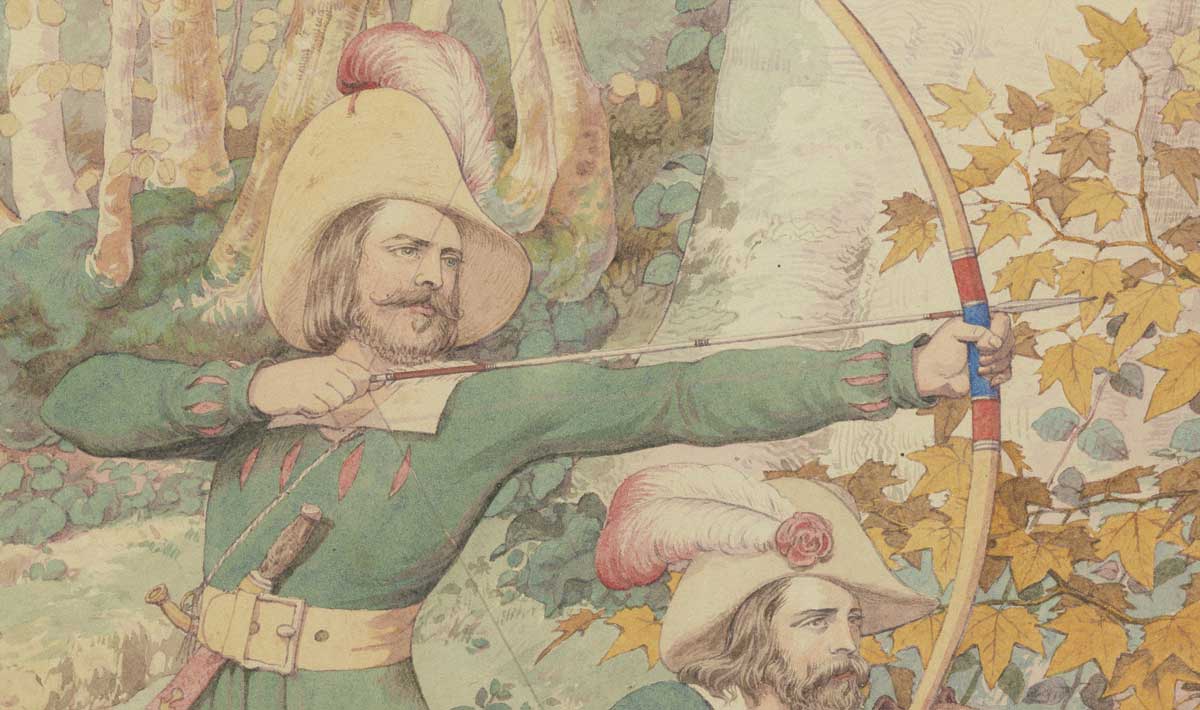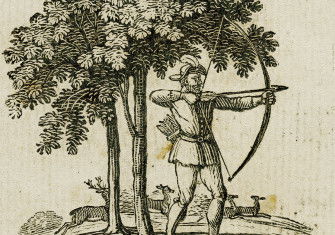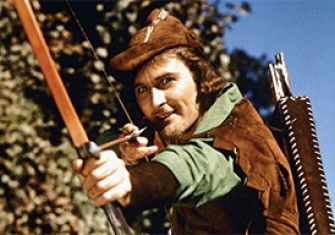Absolute Legend
Hunting in the archives for the ‘real’ Robin Hood.

In 1891 the Dictionary of National Biography, that great historical reference epic, published an entry on Robin Hood – even though the famous outlaw of legend was portrayed entirely as a character of fiction. The hunt for the ‘real’ Robin Hood has nonetheless been the fixation of many historians before and since. Robin Hood: Legend and Reality offers a potent contribution to a crowded field (or should that be forest?) informed by the author’s distinguished career in the National Archives, approaching the character through contemporary governmental records. In 1984 David Crook was responsible for using these records to provide the most important evidence at that time on the dating of the Robin Hood legend, proving that the tales were well known in England by at least the mid-13th century.
Crook provides the reader with excellent summaries and analysis of the Robin Hood stories that come down to us from around the mid-15th century, offering helpful insights into nuances of languages and social conventions. He helps us place the stories within the context of their own times, or to locate them in the recent past; however, as these stories – and they are just that – had been developing for some two centuries by this stage, it does not necessarily bring us closer to the origins of the legend.
Crook discusses how the Robin Hood phenomenon has been approached by antiquarians and historians over the centuries. While this takes us ever further from the original sources, it is fascinating nonetheless. It also provides a warning for those seeking the elusive outlaw: two – Joseph Ritson (1752-1803) and Thomas Wright (1810-77) – eventually lost their minds. Crook’s chapter devoted to the 20th century and its lively academic debates on the subject is a wonderfully lucid digest that will be of immense help to many readers. The coverage largely stops there, however. Crook rarely delves into the last decade or so of research, resulting in a number of significant omissions.
Crook’s intimate familiarity with the archives provides the book with some of its finest gems. He is able to reveal that Robin Hood’s Bay between Whitby and Scarborough ‘is comfortably the earliest Robin Hood placename yet discovered’, identifying its appellation in the mid-14th century, while sensibly noting that the bay ‘has not even the remotest connection with the greenwood’. On names, Crook rightly reminds us that Robert (for which Robin is a pet name) was the second most common male Christian name in England around 1200 and the third by 1300. The brutality and violence of medieval England is also laid shockingly bare from the criminal records, offering fascinating insights into the banditry of the era.
Crook concludes by making his case for identifying the real Sheriff of Nottingham and suggesting the most likely ‘original’ Robin Hood (‘if he ever existed’). Both are problematic, but especially the latter. For Crook, the most credible proto-Robin was a ‘hardened’ and ‘notorious criminal’, a seasoned outlaw in Yorkshire who was almost certainly beheaded in 1225 for his career as ‘an evil-doer of our land’, according to legal documents. In making this proposal, Crook displays dazzling archival skills in his use of Chancery and Exchequer records. Ultimately, though, the criminal theory fails to resolve the hero/outlaw paradox of the legend. Nevertheless, there is certainly room for him to play a part in contributing to the story. Crook’s timing of the stories is likely to be very close to the mark. In sum, this is an important and scholarly addition to the ongoing debate.
Robin Hood: Legend and Reality
David Crook
Boydell & Brewer 312pp £60
Buy from bookshop.org (affiliate link)
Sean McGlynn is author of Robin Hood: A True Legend (Sharpe Books, 2018).






